Atlantic Monthly Contributors's Blog, page 103
August 10, 2016
The Latest Vote in Brazil's Impeachment Saga

NEWS BRIEF Brazil’s Senate voted Wednesday to indict President Dilma Rouseff over allegations she broke budget laws, paving the way for her trial in the chamber.
The Senate, after a 20-hour session, voted 59-21 to accept charges Rousseff manipulated budget figures ahead of her re-election in 2014. The lower house of Congress voted in April to start impeachment proceedings; the Senate followed suit in May. Rousseff has maintained her innocence, and called the allegations against her a political coup.
Two-thirds of the 81-member Senate must vote to impeach Rousseff at her trial. That comes to 54 votes, five fewer than the number of senators who voted to indict the president. If the vote, which is expected as early as this month, succeeds, Rousseff, who is suspended from office, will be removed permanently.
Reuters reports:
A conviction would definitively remove Rousseff from office, ending 13 years of leftist rule by her Workers Party, and confirm that interim President Michel Temer will serve out the rest of her term through 2018.
Rousseff's opponents needed only a simple majority in the 81-seat Senate to put her on trial for manipulating government accounts and spending without congressional approval, which they say helped her win re-election in 2014.
Rousseff, Brazil’s first female president, is a former leftist guerrilla who focused much of her platform on helping the poor. Her supporters have said that if she did indeed move funds around, it’s a common practice, and that many of the politicians accusing her are themselves under investigation for corruption, including interim President Michel Temer.

August 9, 2016
Will Donald Trump Debate Hillary Clinton?

If Donald Trump doesn’t want to debate Hillary Clinton, why doesn’t he just say so?
Last week, Donald Trump alleged that the presidential debates are rigged and lied about receiving a letter from the NFL complaining about the schedules. This week, he has a new angle.
“I will absolutely do three debates,” Trump told Time, then promptly suggested he might not: “I want to debate very badly. But I have to see the conditions.”
Related Story
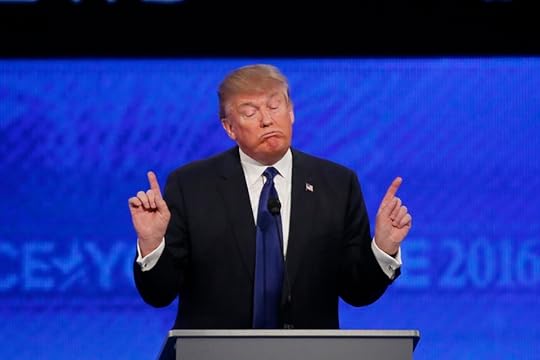
Is Trump Planning to Skip the Presidential Debates?
The Republican nominee said he hasn’t seen the rules and conditions and wants to know who the moderators are. Ever determined to boost his reputation as a dealmaker, Trump added, “I renegotiated the debates in the primaries, remember? They were making a fortune on them and they had us in for three and a half hours and I said that’s ridiculous.”
Trump’s approach to the debates so far suggests that he either does not understand the difference between the structures of primary and general-election debates, or he believes he can bend the general debates to his will just as he did the primaries.
There are some reasons to think it won’t work that way. First, the primary debates were run by commercial channels, in concert with the Republican National Committee. As Trump never tired of pointing out, they were making good money selling advertising during the debates. Meanwhile, the involvement of the RNC gave the candidates and the party some leverage over the networks; if the RNC withdrew its participation, as it did to NBC News, then the debate was gone, along with the commercial boost it would give.
Even then, Trump’s success was limited. He was able to push CNBC to limit the length of one debate, but only in concert with several other candidates who were unhappy. Meanwhile, he tried to bully Fox News into removing Megyn Kelly as a moderator from one debate and failed, deciding to skip the debate instead.
He’ll likely have a harder time with the general-election debates. For one thing, the debates are run not by networks but by the Commission on Presidential Debates, a nonprofit organization created after the 1984 election. It’s made up mostly of former political operatives from each party. The CPD doesn’t have any commercial incentive, and in fact it requires that networks that air the debates do so without commercial interruption. The CPD is also less concerned with ratings than for-profit networks.
Nor can Trump count on other candidates to help him pressure the CPD with him. Hillary Clinton’s campaign on Monday formally agreed to the debates and challenged Trump to do so as well. There’s often some negotiation between the candidates and the CPD about details of the debates—the height and type of lecterns, for example—but the CPD says the formats, which it released in early July, are non-negotiable. (Interestingly, Monday also saw a Politico report indicating that debate sites are preparing for the possibility of three candidates, rather than two, for the first time since 1992. Libertarian Gary Johnson is within striking distance of the 15 percent threshold required to qualify.)
If Trump skips the debate, it would be bad for the CPD. The commission’s control of presidential debates is based only on tradition and norms, and there’s nothing that could prevent a rival organization from springing up except inertia and the high barriers to getting candidates to agree to debates. If Trump skipped a debate but Johnson hit 15 percent, it’s hard to imagine Clinton would be willing to debate Johnson alone. She’d have no incentive to agree to a debate with a candidate who is not her chief rival in a setting that could hurt her.
Trump could look cowardly for refusing to debate Clinton, especially if he’s already trailing in the polls.
But skipping might hurt Trump more than it would the CPD. “I did very well in the debates on the primaries. According to the polls, I won all of them,” he told Time, which is untrue in various ways. The polls he cites were unscientific, while focus groups often named other candidates the winners. More to the point, he skipped one debate altogether and forced the cancellation of another by pulling out, making the debate irrelevant.
That was in a field of 13 debates. There are only three general-election debates scheduled, so that skipping even a single one would have a big impact. One of the few recent candidates to skip a general-election debate was President Jimmy Carter, who in 1980 bailed on a debate with Republican Ronald Reagan because he objected to the presence of John Anderson, an erstwhile moderate Republican running an independent campaign. As Cornell’s Roper Center notes, that was a strategic misstep: “61 percent of registered voters in a Gallup poll said he should not have made that decision. An NBC/AP poll found 30 percent of likely voters who had heard about Carter’s choice said it made them less likely to vote for him.” It also deprived Carter of a chance to face off with Reagan, even though he believed public showdowns with Reagan would benefit him.
For Trump, the danger is that he could look cowardly for refusing to debate Clinton, especially if he’s already trailing in the polls. Given the tough-guy image he’s worked to cultivate, that would be particularly embarrassing. Failure to negotiate a better deal could undermine his putative strengths, too, although he’s said that a good dealmaker must be willing to walk away.
Nonetheless, Trump is perhaps wise to focus in on the question of moderators. After all, he has repeatedly attacked the media. Many Republicans were upset at Candy Crowley’s moderation in the third debate between Barack Obama and Mitt Romney, in which she arguably overstepped her bounds by butting in to resolve a factual dispute between the two candidates.
Although general-election debates can seem like a entrenched part of presidential elections, they’re actually a relatively recent invention, with the first meetings coming in 1948 and the current system dating to only 1976. They’re arguably an important public service, the one time voters are able to see the two (or three) people who could lead the nation together in one place, forced to think on their feet.
During the primaries, Trump repeatedly ignored or flouted long-standing norms. That flummoxed his rivals, but it didn’t hurt his prospects, and in fact may have helped him. Now he is attempting to shatter a new set of norms, from his threats not to debate to his refusal to release his tax returns. The nation’s voters will render a ruling in November on whether they will tolerate such breaks with tradition.

Martha Stewart, Queen of All Internet
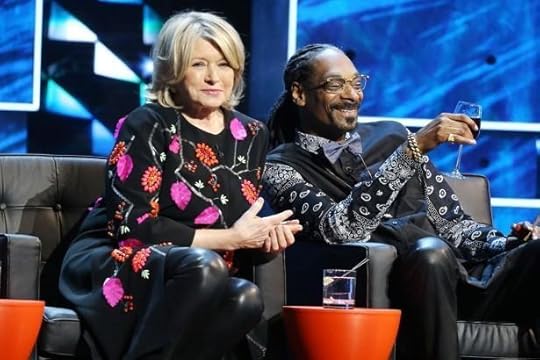
Last year, as part of a holiday special for her now-defunct daytime talk show, Martha Stewart—bedecked, cheekily, in an ugly Christmas sweater—hosted Snoop Dogg in the show’s studio kitchen. The segment was pretty amazing. The two baked holiday treats together—brownies, obviously (topped, to drive the Snoop-likes-weed point home, with visually metaphorical green sprinkles). Martha teased Snoop about his stirring technique. She asked him to rap while they mixed ingredients. He complied. She joined in. She described the velvet suit he had worn to the taping (he had politely declined to wear the ugly sweater Martha’s staff had selected for him) as “très elegante.” The audience—in the studio, and online—loved it. Martha and Snoop! Laughing! Rapping! Making weed jokes! It was too much.
Related Story

Martha Stewart and the Cannibal Polar Bears: A True Story
But if there’s one thing mass media can teach the world, it is that the appropriate response to “too much” is “here’s more.” Martha and Snoop, accordingly, would also hang out together (or à deux, as Martha might say) at Comedy Central’s roast of Justin Bieber. They would appear together on $100,000 Pyramid. And now, it was announced this week, the Odd Couple of the Age of Irony is reuniting for a regular stint: VH1 will soon be airing a cooking show—working title: Martha & Snoop’s Dinner Party—hosted by the duo.
Both members of the unlikely celebrity partnership (Snartha? Moop? Stewp Dogg?) have, to be sure, differing commercial goals to be achieved in the team-up. Snoop has his burgeoning weed business; Martha, her vaguely Borg-toned company, Martha Stewart Living Omnimedia. For Martha, though (we can call her Martha, at this point: We’ve been through a lot with her), the move makes a particular kind of sense. The “domestic diva,” in the wake of both her stint in jail in 2004 (for lying to federal investigators about her stock holdings) and her company’s financial troubles, has been building her brand, in part, by compromising it. She has been expanding that brand according to the logic of the digital world. She has been, basically—as a celebrity and a personality and a sensibility—conquering the internet.
Stewart is recognizing the power of memes and snaps and viral whimsy, and using them to suit her needs.
A VH1 show is not, in strictest terms, the web. But in a broader sense, the media convergence sense, a show like Martha & Snoop’s Dinner Party—the “domestic diva” hanging with her good friend Snoop, the two of them chatting with celebrity guests and making sly allusions to weed—is entirely of the internet. And by it, and for it. The web, as a platform, has given rise to a particular cultural style: one that rewards unexpected meetings (Michelle Obama and Missy Elliott!), cross-genre experiments (Emoji Dick!), and the overall embrace of irony. Martha seems to intuit this, or at least to give the illusion of intuition.
Here are some of the internet-provocative things Martha has done, in her public life, over the past several years: She discussed sexting on late-night TV. She alluded to having a threesome. She made, during Bieber’s Comedy Central roast, a very dirty joke about Ludacris and the absorptive capabilities of Martha Stewart Collection bedsheets. She published, on TheMarthaBlog.com, a photo essay about her cats, Princess Peony, Empress Tang, and Blackie. She captioned one of the essay’s pictures, the one featuring Empress Tang curled up in a molcajete, “I call this ‘cat-a-mole.’” She published several pictures of her Chow Chow, Ghenghis Khan, sitting down to tea at the Plaza. She wrote an opinion piece for Time titled “Why I Love My Drone.” She made a habit of tweeting pictures of food that, in this age of Instagram-filtered perfection, are notable for their fluorescent-lit sloppiness. She publicly beefed with Gwyneth Paltrow. She publicly beefed with Taylor Schilling. She publicly beefed with Blake Lively. She publicized her Match.com profile, and then met two of her potential suitors for the first time, live, on the Today show. Martha once tweeted out a single letter—“K”—to her many followers on Twitter. Everyone (Was it a butt-tweet? A subtweet? An errant DM? The coded key to some yet-to-be-written Dan Brown novel?) lost their minds.
You could say, as The Daily Dot did a couple of years ago, that “Martha Stewart is trolling the internet into oblivion.” Except Martha’s trolling is a very friendly kind of trolling, a very inviting kind of trolling. She is, as any good hostess will, simply providing good conversation fodder for the internet’s great dinner party. And she is repaid for that effort with free media—very positive free media. In 2012, The New York Times declared that Martha “has emerged as something of a patron saint for entrepreneurial hipster.” AOL reported on the “15 times lifestyle queen Martha Stewart totally owned the internet.” Last week, Mental Floss shared “Good Things: 20 Perfect Quotes About Life From Martha Stewart.”
With all this, Martha seems to be—in a way that was never fully the point in the prim, perfectly lit world of Martha Stewart—having fun. She is provoking, casually. She is trolling, winkily. She is chipping away, with systematic nonchalance, at everything it used to stand for: steely aspiration; thirsty perfectionism; homemaking as an art and a craft and a Darwinian struggle; gilt; guilt. Martha, in her homemaking heyday, anticipated the “fantasy of mastery” that would find its apotheosis with the advent of Pinterest and Houzz and Instagram; she is now though, it seems, banking on another ethic, and another kind of fantasy—one that finds empowerment through human folly, one that embraces silliness and messiness and the fact that a Persian cat looks really, really funny while curled up in a guacamole bowl. One that recognizes the communal—and commercial—power of memes and snaps and viral whimsy.
Martha is, as any good hostess will, providing good conversation fodder for the internet’s great dinner party.
In a 1996 essay for The New Republic, Margaret Talbot described Martha’s classic approach according to Christopher Lasch’s term: “the invasion of play by the rhetoric of achievement.” Martha, Talbot explained, “imagines projects of which we would never have thought—gathering dewy grass for our Easter ham, say—and makes us feel the pressing need for training in them. And she exploits, brilliantly, a certain estrangement from home that many working women feel these days.”
Two decades later, though, Martha is exploiting the opposite approach: She is allowing the rhetoric of play to seep into the rhetoric of achievement. She is loosening up. She is being … light-hearted. Two decades later, the home estrangement Talbot described has worsened; what Martha figured out, though, is that many people are facing that simply by expanding their notions of what “home” might be. One’s living space, one’s workspace, one’s computer, one’s phone—all of them can be homey. And Martha can, always the homemaker, conquer them all. There she is, with us at work and in the world and on our screens, on YouTube and Instagram and Twitter and US Weekly and, soon enough, VH1. There she’ll be, selling that most sellable of things: a particular vision of a life well-lived.
In March of 2014, Martha did an Ask Me Anything with Reddit. “What’s it like being friends with Snoop Dogg?” one redditor, tall_and_thin, asked her. Martha responded, in typically frank fashion: “I wish I were closer friends with Snoop Dogg.” Now, through a broadcast dinner party that has all the trappings of reality TV, she’ll get her wish. And that will likely be, for Martha and for Snoop and for a culture that revels in the strategic serendipity that paired them up in the first place, a good thing.

The Allegations Against a UN Contractor in Gaza

NEWS BRIEF Israel announced its arrest of a United Nations Development Programme (UNDP) official Tuesday who allegedly misused his role to siphon aid to Hamas.
Wahid Al Bursh, a 38-year-old contractor from Jabaliya refugee camp in northern Gaza, was detained by Israeli passport control when he was returning to the coastal strip through the Erez crossing in early July. The Shin Bet, Israel’s internal security agency, alleges Al Bursh joined the UNDP under the instruction of Hamas, which governs Gaza and which Israel and the U.S. regard as a terrorist organization. Haaretz has more:
According to the Shin Bet, Bursh abused his power to help Hamas, either by renovating their houses or informing them of such renovations when they held benefit for the group. ... The Shin Bet also accuses Bursh of creating a makeshift jetty in Gaza for Hamas using UN resources."
The investigation," the Shin Bet said, "exemplifies the manner in which Hamas takes advantage of international aid agencies' resources, intended to serve as humanitarian aid for Gaza's civilian population."
Hamas spokesman Sami Abu Zuhri denied the accusations, saying, “These (allegations) are par for the course of an Israeli plot to restrict the work of international relief agencies operating in Gaza in order to tighten the Gaza blockade.”
UNDP said in a statement that it would conduct a thorough internal review of the allegations. Here’s more:
UNDP is greatly concerned by the allegation from the Israeli authorities with respect to the UNDP contractor who has been providing professional services within the rubble removal project. The rubble removal project was established to respond to the consequences of the 2014 hostilities in Gaza. … [it] is considered essential for the recovery and reconstruction of Gaza following the conflict. Mr. Al Bursh should be accorded all due legal process and has the right to a fair trial.
This is the second time this month Israel has accused someone with an international organization of helping Hamas, which both Israel and the U.S. view as a terrorist organization. Last Thursday, Israel charged Mohammad El Halabi, World Vision’s Gaza operations manager, with funneling $43 million to Hamas’s military wing. Halabi’s attorney dismissed the charges, and World Vision said it had no reason to believe the allegations were true, though it said it would review the evidence.
An estimated two-thirds of Gaza’s 1.6 million population relies on some sort of foreign aid. The UN warned in 2015 that the coastal strip, which has been under a joint Israeli-Egyptian blockade for a decade, could be uninhabitable by 2020.

Trump Wonders If Gun Owners Could Stop Hillary Clinton

Donald Trump’s three days of relative calm ended dramatically on Tuesday, as he appeared to crack a joke about assassinating Hillary Clinton during a rally in Wilmington, North Carolina. Trump has argued that even conservatives who don’t like him should vote for him in order to prevent the Democrat from making Supreme Court appointments. It was in that context that Trump made the remark.
“Hillary wants to abolish, essentially, the Second Amendment,” he said. “By the way, and if she gets the pick—if she gets the pick of her judges, nothing you can do, folks. Although the Second Amendment people, maybe there is, I dunno.”
The suggestion that the assassination of a presidential candidate—or the killing of Supreme Court justices, or an armed insurrection, depending on interpretation—could solve a policy dispute is a shocking new low for a campaign that has continually reset expectations. Trump’s defenders often scold the media for being humorless, or taking Trump’s comments too seriously. So let’s preemptively dismiss that counterargument: This aside was clearly intended to be a joke. It is also entirely shocking and appalling, even in that context.
At no point in recent American history has the nominee of one of the two major parties even jested about the murder of a rival. (Watch the man in the red shirt and white beard behind Trump to see his reaction in the clip above.) The recent prevalence of “lock her up!” chants at Trump events look, from some angles, like a disturbing echo of politics in less stable nations, where vanquished political rivals are imprisoned or worse. Trump’s comment today blows well past that line. Even unserious suggestions of killing can be a dangerous thing, as St. Thomas Becket might attest.
Over the past week, Trump went on a spree of gaffes and provocations, including picking a feud over sacrifice with the parents of a slain American soldier. That sequence led to an increasing number of Republicans publicly announcing they will not vote for Trump. Yet none of those comments involved jokes about political murder.
As is often the case, the things that Trump says are out of the mainstream of political discourse, but not entirely novel. He has a knack for taking comments from the fringe and turning them into talking points for his campaign. Take for example his suggestion—ripped from the headlines of the National Enquirer—that Ted Cruz’s father was implicated in the Kennedy assassination. In 2010, Nevada Senate GOP candidate Sharron Angle talked about the potential need for “Second Amendment remedies” to tyranny. Angle was widely condemned, and went on to lose to Senator Harry Reid in the midst of a Republican year.
Clinton campaign manager Robby Mook quickly condemned Trump’s comment, saying in a statement, “This is simple—what Trump is saying is dangerous. A person seeking to be the President of the United States should not suggest violence in any way.”
The Trump campaign, meanwhile, claimed that Trump’s comment had nothing to do with the use of guns. “It’s called the power of unification—2nd Amendment people have amazing spirit and are tremendously unified, which gives them great political power,” spokesman Jason Miller said in a statement. “And this year, they will be voting in record numbers, and it won’t be for Hillary Clinton, it will be for Donald Trump.”
The Secret Service typically investigates even humorous suggestions of violence against presidents and presidential candidates. In 2012, washed-up rocker Ted Nugent said, “We need to ride into that battlefield and chop their heads off in November,” adding, “If Barack Obama becomes the next president in November, again, I will either be dead or in jail by this time next year.” Secret Service agents interviewed him about that comment, concluding he was not a serious threat. Trump’s comment is particularly unusual because he himself is under Secret Service protection. They won’t have to look hard to find him.

Women’s Softball Needs the Olympics
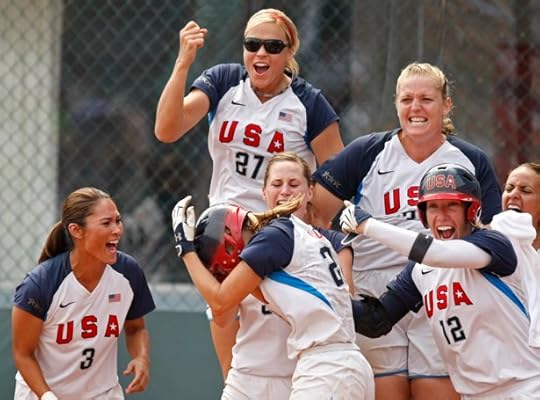
As athletes settled into the Olympic Village and the torch drew ever nearer to Rio de Janeiro on August 3, the International Olympic Committee was already making big decisions about the next four years. That day, it voted unanimously on a proposal to add five sports to the Tokyo 2020 Summer Games: karate, skateboarding, sports climbing, surfing, and baseball/softball. The first four sports are new, whereas baseball and softball—treated as a single sport—are reinstatements. It’s not uncommon for sports to be added or removed from the program, but the return of baseball and softball is noteworthy since they’re the world’s most followed sports currently without Olympic status.
But the IOC vote also represents a major victory for female athletes, specifically for its reintroduction of softball. Unlike popular male-dominated sports such as basketball, “women’s sports” like softball can benefit dramatically from the Olympic spotlight. As the head of the Tokyo Games’ organizing committee Yoshiro Mori said, the Olympics are “the world’s greatest sporting stage.” For many female competitors in particular, it’s the biggest and most meaningful platform available to showcase their talent. Researchers and critics have long noted the wide gender gap between men and women’s athletics when it comes to ticket sales, media coverage, endorsement deals, merchandise revenue, and overall attendance at events. While the reasons for this disparity have been debated, it’s clear that women’s professional sports teams tend to languish in resources and attention compared to their male counterparts.
The prestige and global scale of the Olympics can help make up for this gap. The Games tend to fuel spectator excitement, create awareness around sports, promote new role models, and encourage participation at a more local level—crucial opportunities for underfunded and underappreciated female athletes. Perhaps recognizing all this, many softball supporters cheered the IOC vote. “All I ever wanted was to leave this sport I love in a better place when I retired, so this reinstatement for 2020 is an answered prayer,” Jennie Finch, the star pitcher for Team USA in the 2004 and 2008 Olympics, told me. Michele Smith, the two-time Olympic Gold medalist and ESPN analyst, echoed Finch’s sentiment. “This immediately gives [softball] credibility again,” she said. “It gets countries around the world with this sport to be supported better in their homelands.”
Before digging into what the IOC vote could mean for softball specifically, it’s worth looking at why and how softball has become a “women’s sport,” even though it’s played by athletes of both genders today. In fact, softball was historically played mostly by men. It was first invented in 1887 and went through more than half a dozen names (including Kitten Ball and Diamond Ball) before settling into its current name in 1926. The game quickly gained popularity over the years, reaching a zenith in 1933 at the Chicago World Fair where 70,000 people watched dozens of teams play in a softball tournament with three divisions: fastballers, slow pitch, and women. Still, it wasn’t until many decades later that women’s softball began getting individual attention.
Softball is seen as much more than an athletic endeavor; it’s evolved into a symbol for women’s progress.
The coed history of softball hasn’t stopped the sport from being coded—formally and informally—as “baseball for women.” This idea is also reinforced from childhood, when girls are steered to play softball and boys baseball. Later, they play competitively in college in separate sports: women’s softball and men’s baseball. These gender designations were mirrored in the 1996 Olympic program, where softball was listed as a separate women’s-only sport, and baseball as a men’s-only sport (they used to count as two sports in the Olympic program). Now, by pairing baseball and softball together as one sport, the IOC proposal further advances the notion that one is just a female version of the other.
And yet softball is not an “easy” version of baseball, as some stereotypes and preconceived ideas might suggest. Softball is its own sport, with its own rules, its own history, and its own international commission in the World Baseball Softball Confederation. What’s so special about softball is that it’s one of only a few sports for women that isn’t primarily defined by its relationship with a counterpart male sport. Softball isn’t defined as “women’s baseball” in the way that people define “women’s basketball” and “women’s soccer” in contrast to “regular” basketball or soccer—that is, men’s basketball and soccer. Certainly, there are men’s fastpitch teams and co-ed slow-pitch “beer-league” teams across the U.S., but fastpitch softball is primarily a sport competitively played by women.
Because of its unique position in the world of female sports, softball is seen as much more than an athletic endeavor. It’s evolved into a symbol for women’s progress, for the rights of female athletes to be treated on their own terms, and to reach the heights that men have enjoyed for so long. This is why it was so devastating when the IOC voted in a secret ballot in 2005 to drop softball from the Games after an Olympic tenure that lasted from 1996 to 2008. “I felt like we were taken back 100 years, to a time when women were discouraged from becoming athletes,” Finch told Vox in July of the IOC decision.
Though baseball was dropped that year too, the result was in some ways less painful: The sport still had the Major Leagues and other comparable international professional leagues, all of which are soundly established and financially lucrative. What’s more, men have traditionally been allowed to play most sports competitively, while women have long had to fight for the right to do so. The modern-day Olympics began in 1896, but it wasn’t until 2012 that women were allowed to compete in all sports on the program. In many cases, the wait was painstakingly long for women’s sports to be added: Women’s basketball debuted in 1976 (50 years after men’s basketball), women’s soccer in 1996 (96 years after men’s soccer), and women’s boxing in 2012 (108 years after men’s boxing).
If all goes well, 2020 could be the year that solidifies softball’s place in the Olympics for good.
In the United States, there are many more professional opportunities for male athletes in baseball than there are for female athletes in softball. In terms of quantity, there are 30 professional baseball teams compared to only six professional softball teams. The gender disparity is evident not only in size, but also in remuneration, where the difference is stark. According to an Associated Press study, the average salary of a MLB baseball player in 2015 was $4.25 million, whereas the National Pro Fastpitch, the pro softball league in the US, reports an average salary of $5,000 to $6,000 per female player per season. At that rate, despite their love for the game and their incredible talent, some pro softball players simply can’t afford to play.
When the Olympics canceled softball, the U.S. national team received a reduction in funding support—this made it more difficult for the sport to prosper at the international stage, given how expensive it is for teams to participate in World Cup competitions and tournaments abroad. Fortunately, bringing softball back to the Olympics could lead to a reversal of this trend. As the National Professional Fastpitch Commissioner Cheri Kempf explained to me, the IOC decision offers a concrete motivation for “people to grow the sport and to take it to places where it’s never been, to integrate it, and to also go to places where it already exists and make athletes better and to make coaches better through education.”
The IOC’s vote may be a feminist victory for athletics, but it comes with some caveats. First, the decision is non-binding. The vote applies only to the Tokyo 2020 Olympics, and future host cities and committees have no obligation to keep the five sports. “Of course, I wish it was a permanent reinstatement,” Finch said. “But I know that the sport and the players will take advantage of the next four years and prove why it should be included in future Olympics as well.”
Second, though the proposal passed unanimously, several IOC members expressed apprehension about adding baseball/softball—specifically baseball. The IOC is concerned about ongoing, unresolved negotiations between the U.S. professional baseball league and the International Baseball Federation. (The latter hopes to reach an agreement that would allow “top players” to compete in the Olympics while requiring the U.S. to suspend their pro baseball season during the 2020 Games.) Failing to reach an agreement would jeopardize the inclusion of baseball in future games, which would also jeopardize softball, since the two are paired as one sport. In other words, the fate and future of women’s Olympic softball may depend on the ability of the U.S. men’s professional baseball to successfully negotiate terms with the IOC.
But if all goes well, 2020 could be the year that solidifies softball’s place in the Olympics for good. “The Olympics are the pinnacle of your career if you are a softball athlete,” Smith says. “[The IOC] want sports where the Olympics are the pinnacle of the sport.” Across the world, a love for the game drives millions of girls and women to play softball, dedicating years of intense training to the game. Many start at a young age, like I did. I first played in a recreational league when I was seven, joining a competitive fastpitch team when I was nine, practicing and training year-round through middle and high school, playing varsity softball and summer fastpitch travel league. After that, I graduated to collegiate softball: I was recruited and played four years of NCAA Division I softball at my university.
Like many of my teammates, throughout my childhood I dreamed about being on the Olympic team. The fact that most of us might not have been elite enough to make it there was irrelevant. So long as a player has a dream, she has hope; she has something to strive for. The Olympics represent that dream. As Franco Carraro, who chairs the IOC’s program commission, said, “To create a tradition, you need some time.” It will certainly take time before softball, and women’s sports at large, can establish a new tradition of equality amid repeated setbacks. For all its bureaucracy, the Olympics still provide an essential platform and a forum for female athletes, and with this temporary re-inclusion into the Olympics, softball has been given a dream again—at least for 2020.

Why Saturday Night Live Shook Things Up
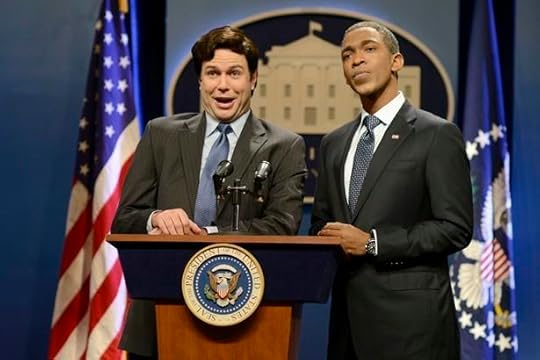
Saturday Night Live has had roughly the same cast for the last three seasons; in the typical arc of the long-running series, this is when the series would be hitting its stride. Over its 41 seasons on the air, SNL has had peaks and valleys, but each new cast usually comes into its own after a couple of years building experience. This time around, that hasn’t happened. Perhaps as a result, the show announced Tuesday that it wasn’t picking up the contracts of three cast members, a shakeup that suggests things aren’t quite right at 30 Rockefeller Center.
Taran Killam, Jay Pharoah, and Jon Rudnitsky certainly aren’t the first cast members to be summarily let go by SNL’s honcho, Lorne Michaels. For most of its tenure, Saturday Night Live was known for the ruthlessness of its reorganizations. But it has also enjoyed a near-unprecedented run of good fortune over the last decade: The transition from the late-’90s cast led by Will Ferrell, Molly Shannon, and Jimmy Fallon to the mid-aughts ensemble fronted by Kristen Wiig, Andy Samberg, and Bill Hader was fairly seamless. The show’s reputation for its hostile cliques changed considerably during this time, but, as the current firings suggest, the lightened mood only lasts as long as the sketches are funny. If history is any indicator, there’s a chance that SNL’s shakeup may not have been brutal enough.
In 1995, perhaps responding to a slew of negative reviews, including a New York Magazine cover story about the show’s “decline and fall”, Michaels fired some of SNL’s biggest stars, including Chris Farley, Adam Sandler, and Kevin Nealon. Even though he went on to A-list movie stardom, Sandler seems bitter about the manner of his departure to this day. (“Who knows?” he told The Daily Beast in 2014 when asked why he was fired.) In 2006, Michaels offloaded much of the show’s cast in the wake of the head writer Tina Fey’s departure, paving the way for younger stars like Samberg, Hader, and Wiig to get more airtime and make the show their own.
These purges were often exactly what the show needed, letting SNL reinvent itself every few years. In 2012, another turnover began. Over 2012 and 2013, Wiig, Samberg, Hader, Fred Armisen, and Jason Sudeikis all left the show, while repertory players like Killam and Pharoah were hailed as its new backbone. Pharoah, a master impressionist who plays everyone from President Obama to Kanye West, hasn’t commented on his firing, but Killam sounded genuinely hurt in an interview with Uproxx.
I was there for six years. I have not been anywhere in my life for six years. I don’t know that the end of something that you’ve committed that much time and energy to is ever going to feel “great” … You sign for seven years, so I had one more year. I had sort of had it in my head I would make this upcoming year my last year, but then heard they weren’t going to pick up my contract. I was never given a reason why, really. I can assume until the cows come home.
Killam played one of the current cast’s few memorable recurring characters—the snooty 1860s critic Jebidiah Atkinson—and had a repertoire of impressions that included Brad Pitt, Matthew McConaughey, and Christoph Waltz. The 2011 debut of his Eminem impression, alongside Pharoah as Lil Wayne, was a remarkable breakout moment for the actor, and an apt metaphor for the arc of a performer on the show. Killam had been mostly backgrounded in his first season on the show; but suddenly he came alive, to raucous cheers from the audience, and his stardom was cemented.
Still, he never quite became the leading man SNL was clearly looking for. The early creative promise of his sketches, like the audacious “Jeunes de Paris,” performed (and written by Killam) entirely in French, leveled off. He was given big assignments like providing the show’s Donald Trump impression; just as quickly, he was replaced, with Michaels bringing back former cast member Darrell Hammond (famed for his work as politicians like Bill Clinton and John McCain) to do the job instead. As is disappointingly common on SNL, the show has a bit of a white-guy logjam to solve—Michaels may have thought that newer performers like Beck Bennett and Pete Davidson needed more room to develop.
Pharoah was hired strictly as an impressionist, but came into his own as a sketch performer, devising recurring characters like the wheezing high school Principal Frye. With Obama soon to be out of office, one of Pharoah’s most crucial roles would have been diminished; nonetheless, it’s a step backward for the cast’s diversity, unless SNL is looking to add new performers of color. Rudnitsky, a stand-up comedian, was added to the cast last year but never distinguished himself as a sketch performer, and was dogged by early controversy over tasteless old jokes on his Twitter feed.
SNL could need a more drastic revamping if it wants to see results.
All of which raises the possibility that the show didn’t go far enough with its overhaul. SNL was noticeably rusty last season, with its brightest spot involving a guest star, Larry David, playing Bernie Sanders. The show failed to capitalize on the charged Republican primaries and the rise of Trump, delivering softball political humor and drawing criticism for having the GOP candidate host an episode, seemingly lending him free publicity in a cheap ratings grab. A slightly slimmer cast could lead to more opportunities for its younger players, but SNL could need a more drastic revamping if it wants to see real results.
The show has one undisputed star—Kate McKinnon, who has been around for four seasons and is already turning heads on the big screen. Her Ghostbusters co-star Leslie Jones also feels primed for a breakout, and has earned the love of SNL’s parent network NBC for her passionate Olympics coverage on Twitter (so much so that she’s going to Rio to help cover the second half of the Games). Aside from that, the show’s cast are mostly reliable utility players who’ve had a few years to prove themselves, and have struggled to attract wider attention. SNL’s Weekend Update anchors Colin Jost and Michael Che are still trying to figure out their chemistry, while the digital shorts made by Kyle Mooney and Beck Bennett haven’t drawn the viral appeal or online audience Andy Samberg enjoyed a decade ago.
The stakes for season 42, then, are pretty high. In 2008, as the Obama/McCain election hit fever pitch, the show struck ratings gold and re-entered the national conversation; the fall of 2016 will be similarly potent. “I think of change as just being part of the show. It has to be renewed every year, and you have to be building for the future,” Michaels said in an interview with Indiewire this June. “This is the first election in my lifetime where I can’t tell you where it’s going. For me, to be able to have a voice in it is important.” Perhaps this shakeup comes from Michaels being dissatisfied with SNL’s voice so far. The recalibration could end up being what the cast needed—or it could be a portent of bigger changes to come.

Rod Blagojevich's Unchanged Prison Sentence
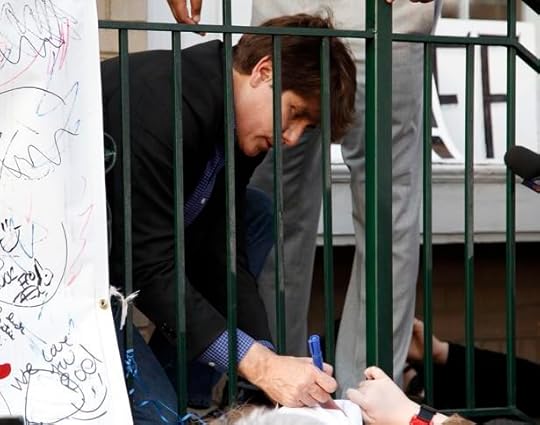
NEWS BRIEF Rod Blagojevich, the former Illinois governor who tried to sell President Obama’s U.S. Senate seat, will remain in prison for the remainder of his 14-year sentence, a judge ruled Tuesday.
The now-white-haired disgraced politician appeared before the federal judge via video from his Colorado prison to plead for a reduced sentence. His attorney read letters from fellow prisoners that attested to Blagojevich’s leadership, while his two daughters also read statements asking for their father back.
Blagojevich too read a statement, telling U.S. District Judge James Zagel:
I regret those mistakes and judgments. And I’m sorry. I wish I could find a way to turn the clock back. … I recognize that it was my words and my actions that led me here. I made mistakes.
Zagel, though, kept Blagojevich’s sentence the same, saying that while Blagojevich was a model prisoner it doesn’t make up for the corruption that got him there.
While in jail, Blagojevich has started a band called the Jailhouse Rockers. (The group has since broken up.) He has also taught history and music classes to fellow prisoners. Blagojevich said this helped him let go of the anger and ambition that led to his downfall.
The former Illinois governor, who was sentenced in December 2011, is due to be released in May 2024.

The Resumption of Hostilities in Yemen

NEWS BRIEF At least 13 people were killed Tuesday in Saudi-led airstrikes on a potato-chip factory in Sanaa, Yemen, following the breakdown of United Nations-led peace talks over the weekend, Reuters reports.
The airstrikes on the Yemeni capital, which targeted Houthi rebels, are the first since April, when the UN-sponsored negotiations between the Saudi-backed government and the Iran-allied Houthis began. The negotiations broke down in Kuwait without an agreement Saturday after the Houthis and the party of former President Ali Abdullah Saleh announced the creation of a 10-member governing council to run the country—a move condemned by the UN, which called the decision “a clear violation of the Yemeni constitution.”
Ismail Ould Cheik Ahmed, the UN special envoy for Yemen, reaffirmed peace talks would continue despite the one-month break and called on all parties to renew their commitment to the cessation of hostilities. He said:
We depart Kuwait today but the Yemen peace talks continue. The structure and mechanism will change during the coming weeks so that we give the parties space to consult with their leaderships. … We must continue to urge the parties to initiate a series of confidence-building measures and it is their duty to continue the releases of detainees and refrain from adopting unilateral measures
Additional attacks were reported Sunday night in eastern Sanaa, in which UNICEF, the UN children’s organization, confirmed reports of at least four fatalities, though it did not say who was behind the attack.
Sanaa fell to the Houthis when the rebel group captured large swaths of the country in 2014. The Saudi-led coalition began launching airstrikes against Houthi-controlled areas in March 2015. Since then, the Office of the UN High Commissioner for Human Rights (OHCHR) estimates at least 9,000 people have been killed, mostly civilians. As of June, the UN reports that more than two million people have been internally displaced.

Can a Data Recorder Solve the Mystery of El Faro?

NEWS BRIEF Late Monday evening, more than 10 months after El Faro sank east of the Bahamas, a crew recovered the vessel’s data recorder, which investigators and family members hope will offer some clues into how and why the cargo ship went down.
“The recovery of the recorder has the potential to give our investigators greater insight into the incredible challenges that the El Faro crew faced, but it’s just one component of a very complex investigation,” NTSB Chairman Christopher Hart said in a statement.
Related Story

It’s Extremely Rare for Large Ships Like El Faro to Disappear
El Faro’s early October disappearance was unusual, as I reported at the time: Although big ships run aground and even sink, few simply go down, even when sailing through hurricanes, as El Faro was. A U.S. Navy crew found the ship’s wreckage on October 31, and in January, the National Transportation Safety Board released ghostly images of the ship on the ocean floor, under 15,000 feet of water. But the ship’s data recorder, similar to the black box on airplanes, was not found with the vessel.
Senator Bill Nelson, the Democrat from Florida, the ship’s home, who sits on the Senate committee that oversees the NTSB, urged the agency to do more to recover the recorder. In April, a new expedition found the recorder near the wreckage. “Finding an object about the size of a basketball almost three miles under the surface of the sea is a remarkable achievement,” Hart said at the time. But it took several more months to mount the expedition to actually retrieve it.
The recorder should provide investigators with information about the ship’s course, and it also records communications on the ship’s bridge. NTSB said recorders are required to maintain at least 12 hours of recording, though they sometimes include more. Investigators have also been working to suss out other information about the ship, including touring its sister ship.
El Faro was found upright, but the bridge had been ripped off, which experts suggested was a sign of a fast and violent sinking. Beyond the hurricane, there’s been little indication why the ship went down, though lawyers for the families of crew members have sued its owner alleging El Faro was not seaworthy. El Faro’s 33 crew members were killed in the wreck, but only one body was recovered. NTSB said Tuesday it had no further missions planned to the site.
“There were no human remains found whatsoever, and no personal effects whatsoever," lead investigator Tom Roth-Roffy told the AP in January. “I think we found one boot.”

Atlantic Monthly Contributors's Blog
- Atlantic Monthly Contributors's profile
- 1 follower



